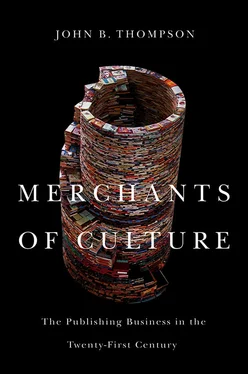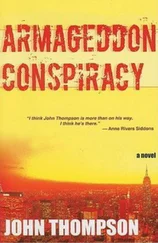From mall stores to superstores
The traditional patterns of the retail book trade – small independent booksellers on the one hand, department stores and other non-book retailers on the other – began to change in the US with the rise of the mall stores in the early 1960s. This development was linked to a major demographic shift that was taking place in the United States at this time, as the middle classes moved out of city centres and into the suburbs that formed the expanding satellites of American cities. 4 With the migration of the middle classes to the suburbs and the rise of the automobile as the primary means of transport, the suburban shopping mall became the new locus of the American retail trade. In 1962 the Walden Book Company, which for many years had operated a network of rental libraries on the East Coast, opened its first retail outlet in a shopping mall in Pittsburgh. Four years later the Dayton Hudson Corporation – a company formed by the merger of two department stores in the American Midwest – opened the first B. Dalton bookstore in a suburban shopping mall in Minneapolis. In 1969 the Corporation bought the Pickwick Bookshop in Hollywood, together with other Pickwick outlets, and in 1972 the two operations were merged to form B. Dalton Booksellers. By 1980 there were more than 450 B. Dalton stores located in shopping malls across the United States. Waldenbooks also expanded rapidly during the 1960s and 1970s; by 1981 Waldenbooks had 750 sites and claimed to be the first bookseller to operate bookstores in all 50 states.
As it turned out, the 1970s were the heyday of the mall-based bookstores; in the course of the 1980s they were gradually eclipsed by the rise of the so-called superstores, especially the chains of Barnes & Noble and Borders. Barnes & Noble was an old bookselling company whose origins dated back to the establishment of a second-hand book business by Charles Montgomery Barnes in Wheaton, Illinois, a suburb of Chicago, in 1873. Barnes’s son, William, moved to New York in 1917 and set up a wholesale book business with G. Clifford Noble, supplying textbooks to schools, colleges and libraries in New York. At the outset, Barnes & Noble was primarily a wholesale operation, selling to educational institutions rather than individual customers, but it gradually became increasingly involved in retail sales, leading to the opening of a large bookstore on Fifth Avenue and 18th Street in Manhattan, which was to become the company’s flagship. By the 1970s, however, Barnes & Noble had fallen on hard times. John Barnes, grandson of the founder, had died in 1969 and the business had been bought by Amtel, a conglomerate that manufactured toys, tools and other products; business declined and Amtel soon decided to divest themselves of their new acquisition. In 1971 Barnes & Noble was bought by Leonard Riggio, who had founded a successful student bookstore while he was a student at New York University in the 1960s and had set his sights on building up a bookselling business. Under Riggio’s management, Barnes & Noble expanded its operations in New York and Boston, opening more stores and acquiring a couple of local chains. In 1986 Barnes & Noble bought the B. Dalton bookstore chain from Dayton Hudson, and in 1989 they acquired Scribner’s Bookstores and Bookstop/Bookstar, a regional chain in southern and western United States. These acquisitions turned Barnes & Noble into a national retailer and one of the largest booksellers in America.
At the same time as Barnes & Noble was expanding its bookstore chain from its original base on the East Coast, Borders was building a national chain of bookstores from its base in the Midwest. In 1971 Tom and Louis Borders opened a small used bookstore in Ann Arbor, Michigan; they moved to larger premises in 1975, expanded the business and ran it successfully for many years. In 1985 they opened a second bookstore in Detroit to see whether they could replicate their success in a less academic setting. The success of the Detroit store encouraged them to expand into other locations in the Midwest and Northeast. In 1992 Borders was bought by the retail giant Kmart, which had acquired the mall-based bookstore chain Waldenbooks in 1984. Kmart merged Borders with Waldenbooks to form the Borders Group, which went public in 1995. By this stage, the Borders Group and Barnes & Noble had become the dominant book retail chains in the United States and their sales were five to ten times those of the other national chains, such as Crown and Books-A-Million.
In the course of the 1990s both Borders and Barnes & Noble expanded rapidly, seeking to extend their presence across the United States and to consolidate their positions as dominant players in the retail book trade. In both cases their expansion was based on the concept of the ‘book superstore’, which differed in certain key respects from both the mall stores and the independents. Often located in prime city locations, the book superstores were designed as attractive retail spaces that drew customers in and encouraged them to browse – they were clean, spacious, well-lit stores with sofas and coffee shops and areas to relax and read. The stores were open for up to a hundred hours a week, seven days a week; they emphasized customer service and attractive, eye-catching displays. The chains competed with one another and with other chains and independents by giving deep discounts (30–40 per cent) on frontlist 5 bestsellers and modest discounts (10–20 per cent) on other hardcovers and by the range and depth of their stock. They centralized stock purchasing and inventory control, which gave them a great deal of leverage in their negotiations with suppliers and enabled them to realize substantial economies of scale. In many cases they stocked merchandise other than books, such as magazines, music CDs, computer games and videos. They sought to make the experience of buying books easy, unthreatening and enjoyable for individuals who were not accustomed to going into a traditional bookstore.
As the rivalry between Barnes & Noble and Borders intensified in the early 1990s, both companies closed many of the mall stores in their B. Dalton and Walden chains and opened more superstores instead. In the year from 1993 to 1994, for example, Barnes & Noble closed around 52 B. Dalton stores, the total number of which fell from about 750 in 1993 to 698 in 1994; at the same time, it increased the number of superstores from 200 to 268. During the same time period, Borders closed 57 Walden stores, the total number of which fell from 1,159 to 1,102, and it nearly doubled the number of superstores, from 44 to 85 (see table 1). 6 The old mall-based bookstores were gradually giving way to the rise of the book superstores.
Table 1The expansion of Borders and Barnes & Noble, 1993–1994
* estimate.
Source : Logos (1996).

By 2006, Barnes & Noble was operating 723 bookstores across the United States, which included 695 superstores and 98 mall stores; its total sales were around $4.8 billion. 7 The company had diversified into the video games and computer software retail business and was operating a large number of video game and entertainment software stores under various trade names including Babbage’s, Funco and Software Etc. It had also become involved in publishing, acquiring Sterling Publishing in 2003 – a non-fiction trade publisher with some 5,000 books in print – and publishing an extensive line of classics under the Barnes & Noble imprint. In 2009 Barnes & Noble entered the ebook market by launching its own ebook reader, the Nook, and selling ebooks from its own website.
Читать дальше













